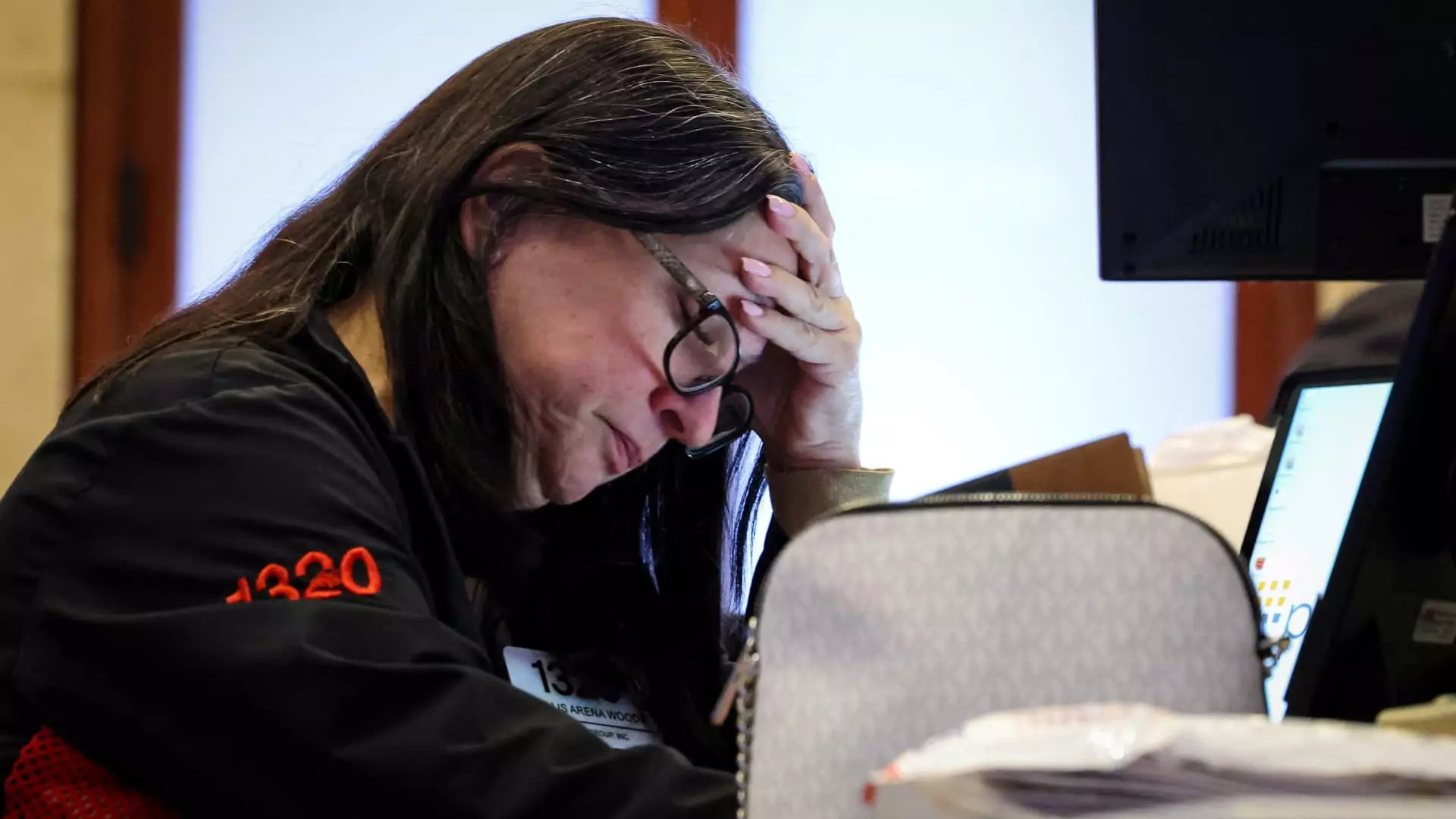As we navigate the turbulent waters of President Donald Trump’s ambitious trade war, the ramifications of his international economic policies become glaringly evident. With market volatility as a backdrop, the threat of stagflation looms large, posing immediate and daunting challenges not only to the stock market but also to the broader U.S. economy. The tension in trade relations has fueled an economic engine that, rather than roaring ahead, seems to be sputtering towards an uncertain future.
Economist Torsten Slok of Apollo Global Management has echoed the sentiment that the current trajectory of tariffs is a harbinger of impending economic distress. Slok’s analysis reveals a stark reality: while the trade war may have been conjured up in the name of American interests, it risks derailing the very fabric of economic stability. With the U.S. GDP predicted to nosedive by 1.5% and inflation surging upwards by the same margin, the repercussions are not merely theoretical; they are palpable and could usher in a cascading effect that the nation won’t be able to easily recover from.
Financial Fallout: The Market’s Disheartening Decline
The stock market has become a visible victim of the tariff chaos, exhibiting drastic fluctuations that have left investors jittery and uncertain. Recent assessments suggest that the S&P 500 has experienced a staggering $6 trillion loss since its peak, a grim marker of the economic upheaval that may be just the tip of the iceberg. Major companies within the so-called “Magnificent Seven,” which include tech giants like Apple and Amazon, have faced unprecedented declines, losing over a trillion dollars collectively in market value. This staggering figure starkly illustrates how intertwined our economy has become with international dynamics.
Some might argue that a trade war could ultimately lead to favorable long-term results. However, the immediate threat of loss, instability, and decreased consumer confidence paints a troubling picture. The recent back-to-back declines in the market are not just statistical anomalies; they signify voter sentiment, business hesitancy, and a growing skepticism about the future. The tech-heavy Nasdaq’s descent into bear market territory signifies a loss of faith in sectors that once fueled America’s economic growth.
Stagflation: The “New Normal”?
The term “stagflation,” historically associated with economic crises of the 1970s, is resurging as a fitting descriptor for the current state of affairs. The unsettling interplay between stagnant economic growth and rising inflation presents a grim scenario that many analysts feared for years. Slok’s concerns resonate deeply; the repercussions of a prolonged trade war are not confined to economic theory but manifest through real-world implications for American families and businesses alike.
This conundrum of slow growth coupled with inflation leads one to question whether we are entering a “new normal.” Americans are already facing rising prices on everyday goods due to tariffs, further squeezing consumers and small businesses alike. While some may insist that tariffs would protect American jobs, the reality suggests otherwise; industries reliant on imports are finding it increasingly difficult to manage costs, leading to job losses in sectors that cannot absorb the additional financial burden.
The Political Implications: A Center-Right Conundrum
Looking at this through a center-right lens, one must wonder about the implications for the Republican Party and its traditional economic principles. Proponents of free trade are now faced with reconciling a situation that contradicts decades of economic policy aimed at fostering growth and minimizing barriers. As the administration’s trade policies create rifts within the party, many center-right thinkers are questioning why, in the pursuit of a populist agenda, we are trading tried-and-true strategies for uncharted territory fraught with uncertainty.
While it’s essential to protect domestic industries, doing so through ham-fisted tariffs risks alienating more stakeholders than it unifies. Acknowledging that some degree of protectionism might be necessary, it is equally crucial to maintain an eye on the broader economic picture to promote sustainable growth. The approach taken thus far has sparked concern not only within investor circles but also among the general populace, who are increasingly aware of how these decisions impact their daily lives.
Corporate Responsiveness in a Time of Crisis
In this chaotic environment, it is imperative for corporations to become more agile and responsive. They must not only adapt to current economic challenges but also develop strategies that mitigate potential impacts from ongoing trade tensions. By diversifying supply chains and reassessing pricing models, businesses can better navigate the storm threatening their financial health. However, the question remains whether these measures will be enough to counterbalance the broader economic malaise resulting from spiraling tariffs.
The risks of inaction by both businesses and policymakers could lead to a long-term economic downturn that far exceeds the current challenges posed by the trade war. As we venture deeper into this concerning reality, it is crucial that we all remain vigilant, holding leaders accountable for the financial future of our nation. The stakes are high, and time is of the essence; swift and strategic actions must be taken to avert an economic catastrophe that could change the landscape of American commerce forever.

